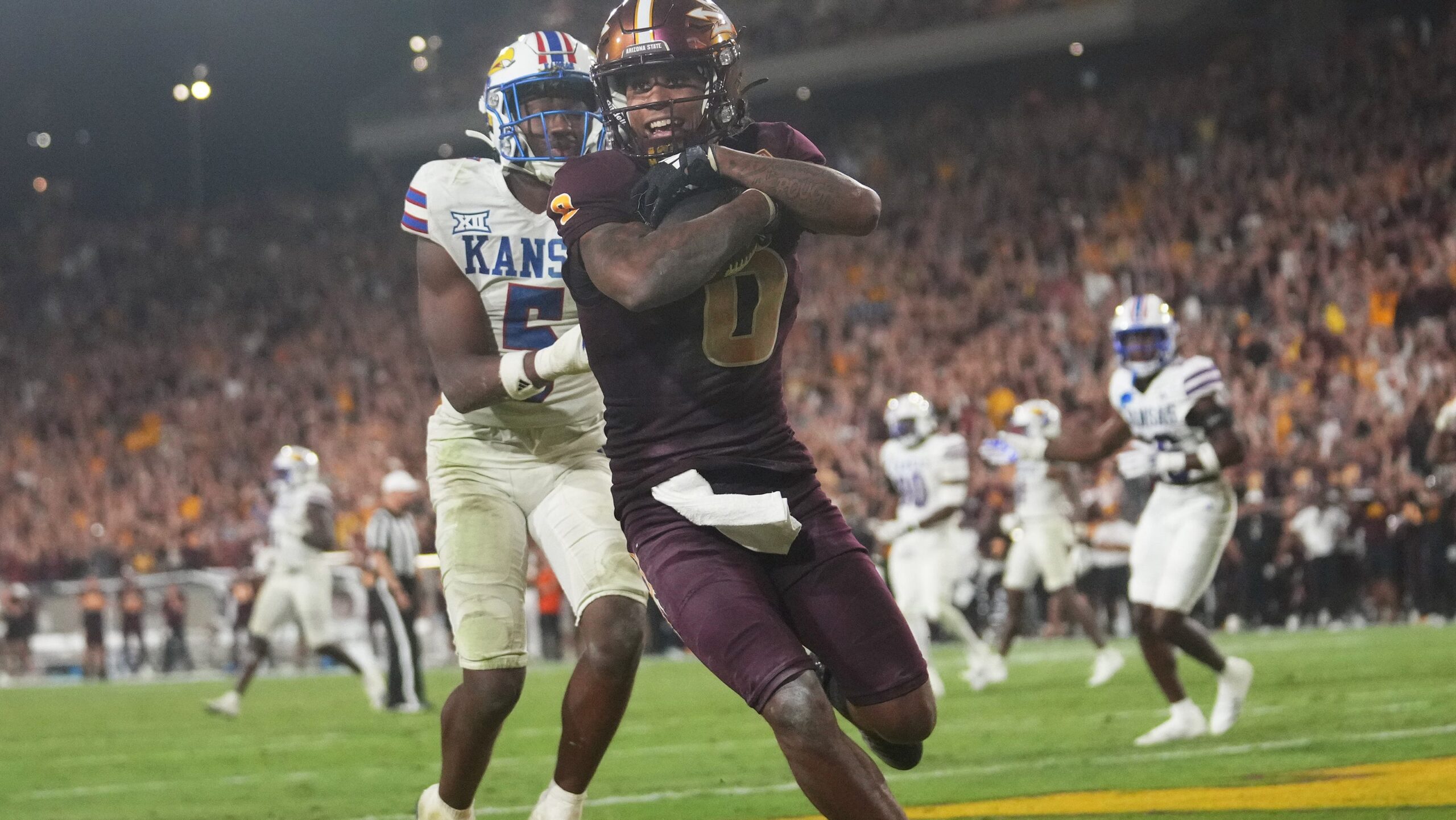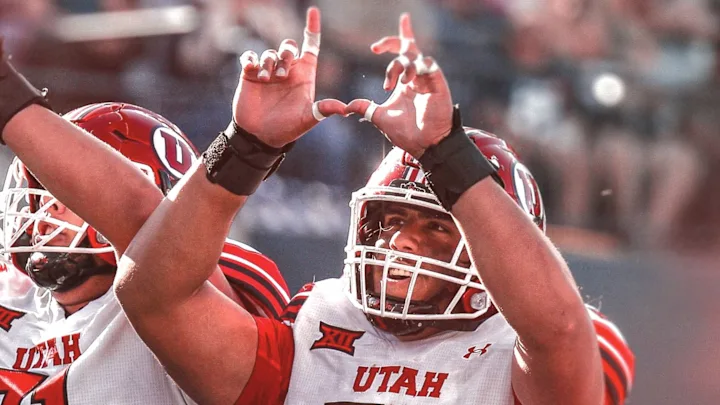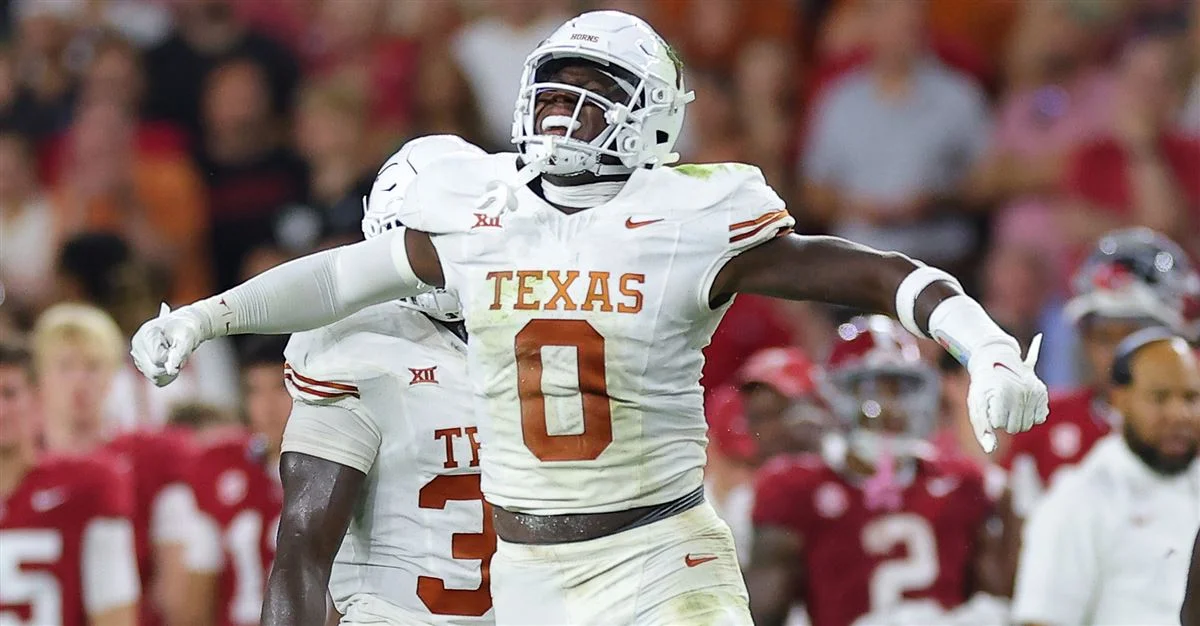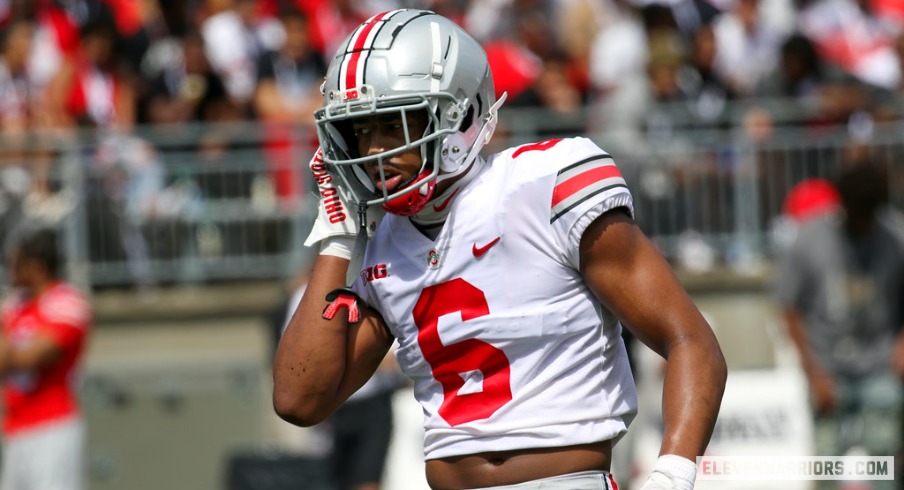By Charlie Campbell.
Send Charlie an e-mail here: [email protected]
Follow Charlie on Twitter @draftcampbell for updates.
This page was last updated April 20, 2017. Follow me @walterfootball for updates.
Position Review: 3-4 Outside Linebackers
3-4 Outside Linebacker Class
Early-round talent: A-
Mid-round: B
Late-round: B
Overall grade: B+
2017 prospects vs 2016
Myles Garrett
Joey Bosa
Leonard Floyd
Charles Harris
Derek Barnett
Shaq Lawson
T.J. Watt
Kevin Dodd
Noah Spence
Dawuane Smoot
Takkarist McKinley
Yannick Ngakoue
Tim Williams
Shilique Calhoun
Ryan Anderson
Jordan Jenkins
For the third straight year, the college ranks have produced a quality class of 3-4 outside linebackers. This year’s group isn’t as good as the 2014 class that featured three rare top-10 talents in Jadeveon Clowney, Khalil Mack and Anthony Barr. However, the 2017 group is on a par with 2016.
Last year’s draft featured three 3-4 outside linebacker candidates who went in the the top 25, and this year’s class should equal that total. They both have comparable talent on Day 2. Overall, these classes are pretty even.
If you were to merge the two classes together, Garrett is the best and ahead of Bosa. Bosa and Floyd are better prospects than Harris and Barnett. Lawson and Barnett are about equal as they are strikingly similar players. Dodd is about equal with T.J. Watt as a fringe first/second-round pick. Smoot and McKinley would go behind Spence and ahead of the third-rounder Ngakoue. However, I think Ngakoue is and will be a better player than McKinley. Still, some team will probably reach on McKinley in the first or second round of the 2017 NFL Draft. Williams is in the second-day range because of off-the-field issues. Anderson is in that same late second- to early third-round range.
Safest Pick: Myles Garrett, Texas A&M

This was an easy choice as I think Garrett will be a double-digit sacker and Pro Bowl player quickly in his NFL career. There is no doubt that Garrett is a freak athlete. He has ridiculous speed and a developed body with natural strength. He also has a tremendous first-step out of his stance. After his get-off, Garrett quickly accelerates to turn the corner. He has the ability to sink his hips and bend around the tackles to get pointed to the quarterback. Garrett uses his good balance and natural strength to fight off blockers. There are times where he also flashes speed to power and can push offensive tackles into the pocket after getting upfield. Garrett is a just a natural pass-rusher who is perfectly suited to the passing-driven game of the next level. He should turn into a great NFL player.
My selections have been held back by injuries, although Jordan was a bust. Fowler missed his rookie year and flashed some in Year 2. Last season, Clowney broke out as one of the best edge defenders in the NFL. He was the best player on the league’s No. 1 defense. Bosa had an excellent rookie year to start his career off on the right foot.
Previous Picks
2016: Joey Bosa
2015: Dante Fowler
2014: Jadeveon Clowney
2013: Dion Jordan
Biggest Bust Potential: Takkarist McKinley, UCLA

McKinley stands out to me as having bust potential as some are projecting him to the first round of the 2017 NFL Draft. For starters, McKinley is undersized as an edge defender at 6-foot-2, 250 pounds, though he is fast and explosive as a high-motor run-and-chase defender. However, I see a lot of flaws with McKinley. One, he has no pass-rushing moves. Two, he is extremely tight and stiff as a rusher. Three, he can get destroyed in run defense. And four, tackles with length give him problems, and he will see bigger, longer offensive tackles in the NFL. Sources have also said that McKinley has a shoulder issue and also is not a slam dunk on the character side in that he can be moody and slow to trust. Thus, I think there are a few potential issues that could lead to McKinley being a bust.
I’ve been 50-50 with this group by being generous and saying Spence will pan out. He had a solid rookie year. Ford turned into a good edge rusher for the Chiefs. Gregory can’t avoid getting suspended and Mingo was a bust, so I was right on those two.
Previous Picks
2016: Noah Spence
2015: Randy Gregory
2014: Dee Ford
2013: Barkevious Mingo
3-4 Outside Linebackers Rankings by Attributes
Pass Rush:
NFL prototype: Khalil Mack, Raiders
- Myles Garrett
- Tim Williams
- Charles Harris
- Derek Barnett
- T.J. Watt
- Takkarist McKinley
- Ryan Anderson
- Dawuane Smoot
Recap: The NFL is a passing-driven league, and 3-4 defenses need edge rushers who can consistently get to the quarterback. Rushing the passer is the primary responsibility for a 3-4 outside linebacker. Some college defensive ends can struggle to make the transition to rushing off the edge as they move out wider from offensive tackles. Some players, on the other hand, thrive with the change.
This was a no-brainer as Garrett is the most natural pass-rusher in the 2017 NFL Draft. He has blinding speed off the edge, can beat blockers in a variety of ways, can win lining up in a variety of spots, and is just a gifted quarterback hunter with rare explosiveness. Garrett could be a player who routinely has annual sack totals in the mid-teens.
Williams is a dangerous edge rusher with elite speed off the edge. He is explosive off the ball and often is on to his second step while blockers and other defenders are still getting out of their stances. Williams closes on quarterbacks in an instant and has the ability to slap away blockers’ hands while working upfield. Williams could use more work on his pass-rushing moves, but there is no doubt that he could provide a serious impact as a pass-rusher for his pro team.
Harris is a fast edge rusher who has an advanced repertoire of moves, including a vicious spin move. He should be a double-digit sacker in the NFL. Barnett set Tennessee’s sack record and has real speed, along with a tremendous ability to dip and bend around the corner. He uses his hands and feet at the same time, too. Barnett is a natural pass-rusher.
Watt could end up being a Pro Bowl edge rusher in a 3-4 defense. He has speed, active hands to fight off blocks, and functional strength. Watt has a great motor and is relentless. Sound familiar? Like his older brother J.J., T.J. looked like he was just scratching the surface of his potential at Wisconsin as he brings a ton of upside to the NFL. T.J. Watt gives a good second effort and is able to bend or cut around defenders. He does a really nice job of slapping down blockers’ hands to get free of them. Watt has the quickness to go around the corner and will be even better as he incorporates more pass-rushing moves.
McKinley’s best skill is rushing the passer. He is fast and explosive on the edge. However, McKinley is very tight, lacks moves, and struggles with long offensive tackles. Thus, McKinley’s pass rush in the NFL may not ever match the media hype.
Anderson is a talented edge rusher who is a dangerous edge blitzer. He has a quick get-off and the ability to turn the corner. He had just eight sacks last year, but all of them came at clutch times. Anderson is a blue-collar player who finds a way to get the job done.
Smoot is quick, athletic and explosive. He is more of a disruptor, however, than a producer in the pass-rush department. Smoot is the kind of end who will produce a lot of pressures but maybe not that many sacks. Having an elite rusher on the other side would help push his sack numbers up.
Run Defense:
NFL prototype: Jadeveon Clowney, Texans
- T.J. Watt
- Ryan Anderson
- Dawuane Smoot
- Myles Garrett
- Derek Barnett
- Charles Harris
- Tim Williams
- Takkarist McKinley
Recap: Many 3-4 defenses typically don’t require their outside linebackers to be assets against the run, because the schemes rely on their 3-4 defensive ends, nose tackle and inside linebackers to lead the way in run defense. However, the success of the read option is changing that, as the edge linebackers play a critical role in defending against it. Being tough versus the run could become a more important attribute in the seasons to come.
In the ground game, Watt was really tough at setting the edge for Wisconsin last year. Often, he was strong against the run to hold his ground and get off blocks. Watt also would fire into the backfield to disrupt perimeter runs, and on plays where he went unblocked by design, Watt showed the quickness to get to the running back from the backside. Watt should continue to get better in the NFL, and I think he will be an asset against the run as an outside linebacker in a 3-4 defense.
Anderson is solid against the run. He is strong at the point of attack to hold his ground and get off blocks. His run defense is well developed for the NFL. Smoot is strong at the point of attack and does a nice job of holding his ground against downhill runs.
Garrett’s run defense was an issues in his first two seasons, but he got better as a junior. Garrett is improving, and as his body matures, he will get stronger. In a few years, I think he could turn into an average run defender.
Barnett’s run defense was inconsistent in college. There were times where he was pretty tough and other times where he was ineffective. Scouts have been critical of his run defense.
Harris does well in pursuit and can disrupt by firing into the backfield; however, he can get washed out in downhill runs coming straight at him and struggles to shed blocks. Williams is not a tough run defender and can get pushed around. As a result, Williams was a situational pass-rusher for the majority of his time at Alabama.
McKinley is a vulnerable run defender who can get destroyed in the ground game. His run defense will probably make him only a situational pass-rusher to start his career, and he could be that way for his entire tenure in the league because he is undersized.
Dropping Into Coverage:
NFL prototype: Clay Matthews, Packers
- Ryan Anderson
- T.J. Watt
- Dawuane Smoot
- Charles Harris
- Myles Garrett
- Derek Barnett
- Tim Williams
- Takkarist McKinley
Recap: The NFL is a passing-driven league, and 3-4 defenses need linebackers who can function in space while dropping into pass coverage. The 3-4 defense is predicated on variety, so it requires linebackers to fall back into pass coverage to avoid predictability.
This group doesn’t have a lot of experience dropping into coverage. It isn’t surprising because they were the best pass-rushers on their teams, so having them drop into coverage didn’t make a lot of sense.
Anderson was solid in zone coverage in college, but he could have issues with fast running backs and tight ends. He could be okay, but probably not a player his defense wants isolated in a one-on-one situation. Watt did some dropping into coverage, and he was better than you would expect. He functions well in space and has good instincts.
The other six players didn’t do it enough to provide a real evaluation. Harris, Garrett, Barnett, Williams and McKinley are all being drafted for their pass-rush abilities above everything else, so they won’t be dropping into coverage very much at all if they are drafted into a 3-4 defense.
Speed:
NFL prototype: Von Miller, Broncos
- Myles Garrett
- Charles Harris
- Tim Williams
- Takkarist McKinley
- Derek Barnett
- Dawuane Smoot
- T.J. Watt
- Ryan Anderson
Recap: Speed is necessary to be an effective 3-4 outside linebacker. A quick first-step makes a big difference in applying pressure to the quarterback. The elite 3-4 edge rushers are explosive and are extremely fast with flying into the backfield.
In terms of pure foot speed, Garrett is the fastest rusher off the edge. He has a lightning first-step and closes on quarterbacks like a blur. Garrett is very fast off the edge and presents a speed mismatch against offensive tackles.
Harris is fast as well. He gets off the line extremely fast with excellent first-step quickness. His speed has offensive tackles constantly reaching for him. Williams and McKinley are very fast off the edge, too. They have blinding speed to turn the corner with a burst off the line.
Barnett and Smoot have quickness. They aren’t blinding speed demons off the edge, but they have the speed to get after the quarterback in the NFL. Against a number of tackles, they’ll be able to win with speed, but they won’t be able to win with speed alone against a quality edge blocker.
Watt and Anderson are quick defenders. They don’t have blinding speed, but they are quick off the ball and around the edge.
Strength:
NFL prototype: Tamba Hali, Chiefs
- Dawuane Smoot
- Myles Garrett
- Ryan Anderson
- T.J. Watt
- Derek Barnett
- Charles Harris
- Takkarist McKinley
- Tim Williams
Recap: 3-4 outside linebackers need the strength to fight off offensive linemen, especially when teams slide protections their direction with double teams. Having the power to shed blocks separates the effectiveness of a lot of players.
Smoot (255) is strong for his size and doesn’t get pushed around. Garrett has functional strength in the pass rush, but could stand to get stronger in his base for run defense.
Anderson (6-2, 258) has developed the strength to fight off blocks and hold his ground. He is a gritty defender who plays with physicality and a mean streak. Watt is strong at the point of attack. He can fight off blocks and set the edge in run defense. Watt has upside to get stronger in the NFL.
Barnett (259), Harris (253), McKinley (250) and Williams (244) all need to get stronger for the NFL as they could have problems with offensive tackles pushing them around in the ground game and shedding blocks in the pass rush.
Motor:
NFL prototype: James Harrison, Steelers
- Takkarist McKinley
- T.J. Watt
- Ryan Anderson
- Dawuane Smoot
- Tim Williams
- Myles Garrett
- Derek Barnett
- Charles Harris
Recap: The majority of great pass-rushers have motors that don’t quit. Effort can make the difference between an edge rusher having 12 sacks in a season versus eight.
McKinley has a relentless style of play. Every snap, he’s looking to make a play and always gives good effort. Watt and Anderson definitely have good motors, too. They never quit on plays and fight through the whistle.
Smoot fulfills his assignments at a high level, and you never see him loafing when a play goes away from him. Williams was basically a designated pass-rusher in college, and he always went all out when he came into the game.
Garret and Barnett gave good efforts generally and have steady motors. Garrett’s motor was better as a sophomore and freshman when he wasn’t playing injured like his junior year. Harris doesn’t have a bad motor, but it isn’t overly impressive.
Forced Fumbles:
NFL prototype: DeMarcus Ware, Broncos
- Myles Garrett
- Charles Harris
- Takkarist McKinley
- Ryan Anderson
- T.J. Watt
- Dawuane Smoot
- Tim Williams
- Derek Barnett
Recap: Defenses and teams thrive off turnovers, so a pass-rusher who has the skills to force fumbles is a game-changer. Many players go for strip sacks, but some are more effective than others.
Garrett was the best at it in 2015 as he had five forced fumbles. He dropped to two forced fumbles last year, but he clearly has the instincts to go for the strip.
Harris notched two forced fumbles in each of the past two seasons. I think his speed rush skills could lead to him forcing a steady amount of fumbles in the NFL. McKinely had three forced fumbles last year and showed the inclination to go for the ball.
Anderson was a clutch defender for Alabama. In crunch time, he always seemed to be at the right place at the right time to force a fumble, recover it, or get a key sack to keep points off the board. Anderson produced four turnovers last year, and that was the most of any of these defenders.
Watt produced a few sack-fumbles last year and will get better with more experience. Smoot had two forced fumbles last year, but also suffered from a lack of opportunities as the Illini were playing from behind a lot, so that decreased his pass-rushing chances. Williams was a quarterback hunter who had two forced fumbles last year. Considering his role, one would think he would be better at going for the strip on the quarterback. Barnett notched two last year, one the previous year, and zero as a freshman. Considering he had over 30 career sacks, one would think he would have had more forced fumbles.
NFL Picks - Dec. 13
NFL Power Rankings - Dec. 10
2026 NFL Mock Draft - Dec. 10
Fantasy Football Rankings - Sept. 1




